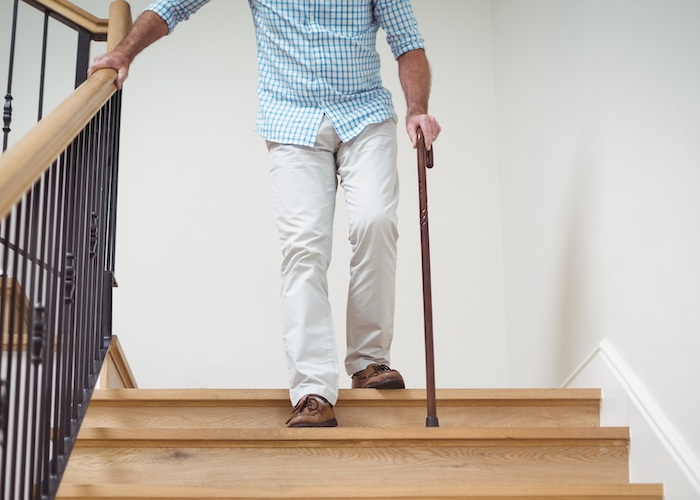This Common Condition Can Reduce Blood Flow to the Legs and Arms
February 26, 2024
 Do you experience coldness, numbness or weakness in the lower leg or foot, or cramping in your thighs or calves after walking or climbing stairs? If so, you might have peripheral artery disease.
Do you experience coldness, numbness or weakness in the lower leg or foot, or cramping in your thighs or calves after walking or climbing stairs? If so, you might have peripheral artery disease.
John Bartolozzi, MD, interventional cardiologist at St. Mary’s Regional Medical Center, provides helpful information on diagnosing and treating PAD.
What is PAD?
Peripheral artery disease is a common condition in which narrowed arteries reduce blood flow to the arms or legs. The legs or arms — usually the legs — don't receive enough oxygen-carrying blood to keep up with demand. This may cause leg pain when walking and other symptoms. PAD is usually the result of a buildup of fatty deposits in the arteries, known as atherosclerosis. It is more common as we age.
Is it more common in men or women?
It is more common in men. However, new studies have shown that though women may be less at risk for developing PAD, they may experience more severe symptoms that require treatment.
What are some of the risk factors associated with PAD?
- Smoking
- Being more than 50 years old
- Being male
- Family history of PAD
- Diabetes
- High blood pressure
- High cholesterol
- Obesity
- Lack of exercise
What are the symptoms of PAD?
- Pain, which worsens at rest and becomes severe enough to restrict any movement
- Cold legs that become pale or blue
- Numbness and tingling in legs
- Leg ulcers that don’t heal
- Gangrene (tissue death), which may require amputation to avoid the loss of the whole limb and infection
What tests determine if a patient has PAD?
Imaging studies, such as ultrasound and X-ray, and blood tests are used to diagnose PAD. The Edinburgh Claudication Questionnaire, which consists of six questions, is also used.
What are the treatment options for PAD?
If it is determined that someone has PAD, the goal is to control the symptoms, improve the quality of life, prevent life-threatening complications and avoid amputation.
- Patients should make lifestyle changes, such as quitting smoking, improving their diet and exercising regularly.
- Medications can be prescribed to treat underlying conditions and reduce the chance of blood clots.
- If an artery is blocked, a doctor can place a stent inside the artery to keep blood flowing through it. This procedure is called angioplasty and involves the physician inserting a catheter with a balloon attached to it through a large artery, such as the femoral artery, to reach the narrowed artery, then inflating the balloon and dilating the artery.
- Atherectomy is a type of angioplasty in which the physician uses a blade to remove the plaque.
- In severe cases, where most of the vessel is narrow or blocked and there are multiple areas of narrowing, bypass surgery may be needed.
- Amputation can be used to avoid further tissue loss and infection.
You can lower your chances of developing PAD. Don’t ignore the symptoms, especially if you have risk factors. Remember that the earlier the diagnosis, the better the chance for successful management of the condition.
